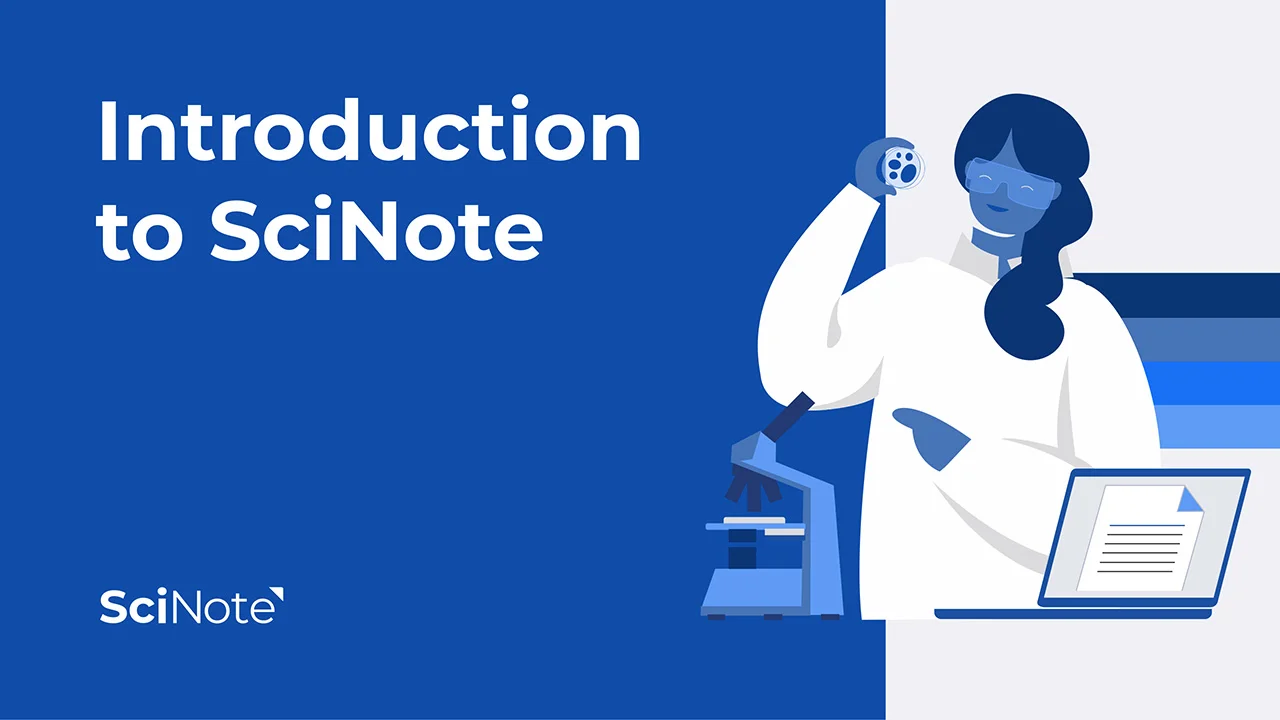Comments
- No comments found

In the fast-paced world of scientific research and development, efficiency and accuracy are paramount.
Laboratories are bustling hubs of innovation, where researchers tirelessly work to unravel mysteries, develop groundbreaking technologies, and push the boundaries of human knowledge. However, amidst this whirlwind of discovery, one critical aspect often overlooked is data management. Traditional paper-based lab notebooks, once the cornerstone of scientific documentation, are gradually being replaced by their digital counterparts — Electronic Lab Notebooks (ELNs). In this article, we delve into the transformative potential of ELNs in revolutionizing lab efficiency and streamlining data management processes.

Historically, lab notebooks have been the primary means by which scientists record experimental procedures, observations, and results. These handwritten records serve as a detailed chronicle of the scientific process, providing invaluable insights into the development of ideas and discoveries. However, the conventional paper-based format poses several challenges in today's dynamic research landscape:
Limited Accessibility: Paper notebooks are physical entities confined to the laboratory environment. Accessing and sharing information across geographically dispersed teams can be cumbersome and time-consuming.
Risk of Loss or Damage: Paper notebooks are susceptible to loss, damage, or deterioration over time. Irreplaceable data may be lost forever due to accidents or natural disasters.
Data Fragmentation: With multiple researchers maintaining separate notebooks, consolidating and synthesizing data from disparate sources becomes arduous, leading to data fragmentation and duplication.
Lack of Version Control: Paper-based records offer limited version control capabilities, making it challenging to track revisions, edits, and updates accurately.
In response to these challenges, SciNote - Electronic Lab Notebook has emerged as a modern solution to streamline data management and enhance collaboration in scientific research. ELNs are digital platforms that replicate the functionalities of traditional lab notebooks while offering numerous advantages:
Centralized Data Storage: ELNs provide a centralized repository for storing experimental protocols, data, and observations in digital format. This centralized approach facilitates seamless access to information from anywhere with an internet connection, promoting collaboration and knowledge sharing among team members.
Enhanced Accessibility: Unlike paper notebooks, which are bound by physical constraints, ELNs offer unparalleled accessibility. Researchers can access and update records in real-time, enabling instant collaboration and knowledge dissemination across departments and institutions.
Improved Data Integrity and Security: ELNs employ robust encryption protocols and access controls to safeguard sensitive research data from unauthorized access or tampering. Advanced authentication mechanisms ensure that only authorized personnel can view, edit, or delete records, thereby preserving data integrity and confidentiality.
Efficient Search and Retrieval: ELNs feature powerful search algorithms and indexing capabilities that enable researchers to retrieve specific information quickly. Whether searching for experimental protocols, results, or annotations, users can effortlessly navigate vast repositories of data to extract relevant insights and trends.
Version Control and Audit Trail: ELNs maintain a comprehensive audit trail of all activities performed within the system, including user interactions, edits, and revisions. This granular level of traceability enhances accountability and facilitates compliance with regulatory requirements, such as Good Laboratory Practices (GLP) and ISO standards.
ELNs offer a myriad of features and functionality designed to streamline laboratory workflows and enhance productivity. Some key features include:
Template-based Experiment Design: ELNs provide customizable templates for designing experiments, allowing researchers to standardize protocols and procedures across projects. Template-based design minimizes errors and inconsistencies while promoting reproducibility and scientific rigor.
Data Integration and Analysis: ELNs seamlessly integrate with laboratory instruments and data analysis software, enabling automated data capture and analysis. Integration with analytical tools such as chromatography software or spectrophotometers eliminates manual data entry errors and accelerates data processing and interpretation.
Collaborative Workspaces: ELNs offer collaborative workspaces where researchers can share documents, annotate findings, and engage in real-time discussions. Team members can collaborate on projects irrespective of their geographical location, fostering a culture of teamwork and innovation.
Electronic Signatures and Witnessing: ELNs support electronic signatures and witnessing capabilities, allowing researchers to sign and authenticate electronic records in compliance with regulatory guidelines. Electronic signatures enhance the credibility and legal validity of electronic documents, eliminating the need for cumbersome paper-based signatures.
Mobile Compatibility: Many ELN platforms offer mobile applications compatible with smartphones and tablets, enabling researchers to access and update records on the go. Mobile compatibility enhances flexibility and productivity, allowing researchers to stay connected and informed even outside the laboratory environment.
While the benefits of ELNs are undeniable, successful implementation requires careful planning and consideration of several factors:
User Training and Support: Adequate training and support are essential to ensure successful adoption and utilization of ELNs. Organizations should invest in comprehensive training programs to familiarize users with the features and functionalities of the platform, thereby minimizing resistance to change and maximizing user engagement.
Data Migration and Integration: Transitioning from paper-based to electronic workflows necessitates meticulous data migration and integration efforts. Organizations must develop robust strategies for migrating legacy data to the new ELN platform while ensuring data integrity, consistency, and compatibility with existing systems.
Regulatory Compliance: Compliance with regulatory requirements is paramount in highly regulated industries such as pharmaceuticals and biotechnology. ELN platforms must adhere to industry-specific regulations and standards, such as FDA 21 CFR Part 11, EU GMP Annex 11, and HIPAA, to ensure data integrity, confidentiality, and traceability.
Scalability and Customization: ELN platforms should be scalable and customizable to accommodate evolving research needs and organizational requirements. Organizations should select ELN vendors that offer flexible deployment options, robust customization capabilities, and scalable infrastructure to support future growth and expansion.
As technology continues to advance, the role of Electronic Lab Notebooks in scientific research is poised to expand further. The integration of artificial intelligence (AI) and machine learning (ML) algorithms within ELNs holds the promise of automating data analysis, predicting experimental outcomes, and uncovering hidden patterns within vast datasets. Additionally, the incorporation of blockchain technology may enhance the security and traceability of research data, providing an immutable and transparent record of scientific endeavors.
In conclusion, Electronic Lab Notebooks represent a paradigm shift in data management and collaboration within the scientific community. By leveraging digital technologies and advanced features, ELNs empower researchers to streamline workflows, enhance productivity, and accelerate scientific discovery. As laboratories embrace the digital age, ELNs will continue to play a pivotal role in driving innovation, fostering collaboration, and revolutionizing lab efficiency in the pursuit of knowledge and breakthrough discoveries. The future holds exciting possibilities as ELNs evolve to meet the ever-growing demands of the scientific community, ensuring that research endeavors are not only efficient but also at the forefront of technological advancement.
Leave your comments
Post comment as a guest